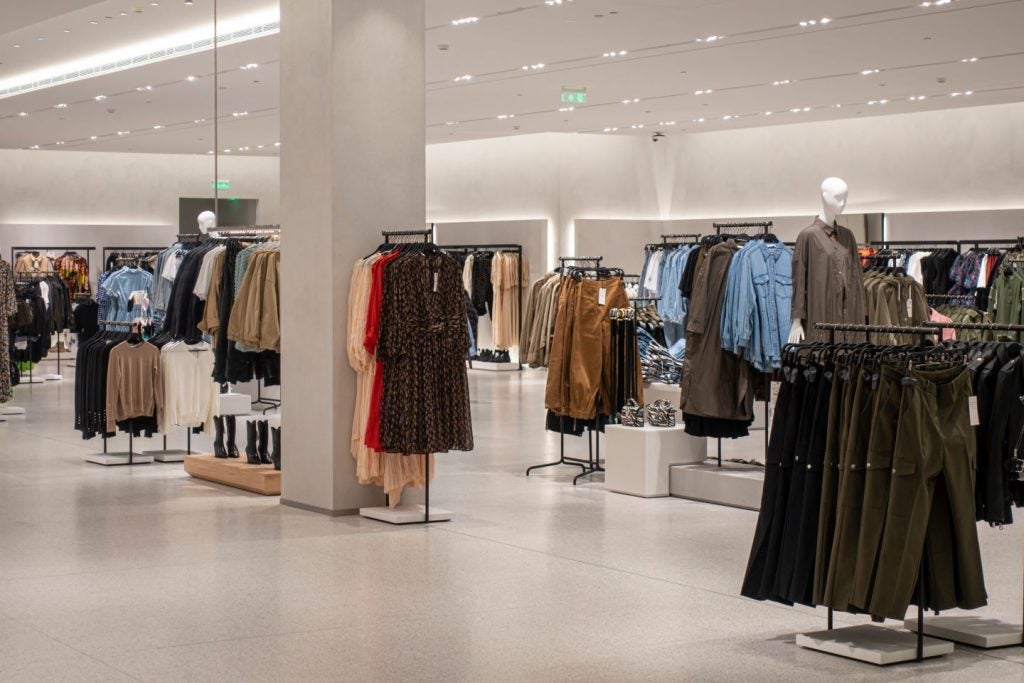The Remake Fashion Accountability Report 2024 assessed 52 fashion brands and retailers with an annual revenue of over $100m and created accountability assessment criteria scores in terms of progress on social and environmental goals across six categories: traceability, wages and wellbeing, commercial practices, raw materials, governance and environmental justice.
The authors of the report explained the average accountability score for an individual fashion company was 14 points or 9.33%, which the same as last year, and stated: "That is pretty dismal when you consider that there are a total of 150 possible points and the climate crisis is upon us."
The average scores for traceability (one out of eight possible points), wages and wellbeing (two out of 23), commercial practices (one out of 15), and governance (three out of 42 points) all stayed the same.
Raw materials (three out of 20 possible points) and Environmental Justice (five out of 42 points) only improved by one point this year.
Remake's fashion accountability report reads: "In short, there has been a great stagnation of the grandiose promises of the past decade to pay people enough to live lives of dignity and to be net positive to our planet.
"This situation is not sustainable, not from an environmental perspective, and not from a business perspective. How long can an industry stagger along, haemorrhaging talent and abusing the communities and ecosystems it relies upon to function?"
Key findings from Remake's accountability for fashion 2024 report
Worker wages and wellbeing
Nine companies (17%) revealed rates of unionisation and/or collective bargaining agreements in their Tier 1 cut-and-sew factories.
Six companies (12%) disclosed what percentage of their direct employees are covered by collective bargaining agreements.
Two companies (4%) publicly disclosed the percentage of garment workers receiving living wages. A quarter of companies (13) disclosed what living wage benchmarks they use, or what methodology they use to quantify a living wage.
Supplier codes of conduct
28 companies (54%) have comprehensive Supplier Codes of Conduct in place to assess factories’ compliance with international labour, health and safety, and environmental standards.
None of the 52 companies publicly committed to insert a Buyer Code of Conduct in all purchase order contracts with all Tier 1 suppliers, thus accounting for the role buyers themselves play in upholding the standards laid out in Supplier Codes of Conduct.
Two companies (4%) included responsible sourcing timeline considerations in their order planning to protect human rights and worker wellbeing, providing sufficient detail on how exactly they do so.
Scope three emissions
37 companies (71%) disclosed their total annual carbon emissions across their entire value chain, including Scope 3. 30 companies (58%) have set short-term emissions reduction targets in line with a 1.5°C pathway and have had them approved by the Science Based Targets initiative.
Four companies (8%) have set long-term Net Zero targets and have had them approved by the Science Based Targets initiative.
Three companies (6%) met all four of Remake’s climate demands of publishing full emissions, having set (and approved) short-term 1.5°C pathway-aligned science-based targets; having set (and approved) ambitious long-term net-zero targets; and have demonstrated they are reducing their total greenhouse gas emissions compared to their base years.
Toxic chemicals
Four companies (8%) publicly disclosed their water footprints all the way up to raw material level.
Three companies (6%) sufficiently demonstrated that they are making progress towards time-bound targets to ensure that water is sustainably managed on a local level throughout key production regions.
Five companies (10%) demonstrated that they provide financial incentives to suppliers to sustainably manage their water resources, such as investing in water-efficient technologies and processes.
Suppliers
32 companies (62%) published a detailed list of their Tier 1 cut-and-sew garment factories. 15 companies (29%) published a complete list of Tier 2 fabric mills.
None of the 52 companies published supplier lists that fully trace down to Tier 3 processing facilities or Tier 4 raw materials suppliers.
20 companies (38%) failed to publish even a Tier 1 supplier list at a sufficient level of detail.
Materials
Two companies (4%) demonstrated that their usage of biogenic materials that strive to be net positive is increasing, with a time-bound target to reach 100%.
Three companies (6%) demonstrated and reported that their overall portion of oil-based synthetics is decreasing (and not simply that their use of recycled content is increasing).
None of the 52 companies could demonstrate they sourced recycled polyester transparently while also phasing out all materials that lack a textile-to-textile solution.
Circularity
13 companies (25%) had in-house resale initiatives to sell the companies’ own pre-owned products.
15 companies (29%) provided either upcycling or repair services, helping consumers extend the life of their clothes.
Two companies (4%), received points for providing garment rental services, however, none of the 52 companies demonstrated that circular services and revenue streams will eventually be used to replace linear production, not merely run parallel to the production of new goods.
Remake's 14 solutions for making fashion accountable
- For broader, systemic change to actually occur, large and influential brands and retailers need to support legislation and binding agreements that hold fashion companies themselves mutually accountable for the human rights and environmental impacts along their supply chains
- To create lasting change through policy reform it is vital that workers are centered and consulted in the development of any proposed legislation, and upchain accountability mechanisms are built in from the outset.
- Fairer contracts are a crucial means of revising the systemic power imbalance that pervades the fashion industry.
- Companies must both pay a living wage to their workers and back their claims with wage data and their methodology for what constitutes a living wage.
- Companies can influence the outcomes of minimum wage negotiations at the country level. It is thus imperative that brands and retailers not only publicly support the minimum wage demands of unions and workers, but also agree to account for such increases in the prices they pay to their suppliers. And, they must use their power to advocate for union capacity building in environments where freedom of association is constrained.
- A fashion company’s Social Compliance, Sustainability, and Buying and Merchandising teams need to be aligned and incentivised toward the same goal: treating suppliers with respect by hewing to fair business practices.
- When a company decides to drop a supplier, there should be a plan in place to ensure that the factory and its workers are given plenty of notice and that the workers laid off as a result are taken care of.
- We can’t achieve a more just and equitable fashion industry without good practices first being enshrined in contracts.
- What the fashion industry needs is a significant investment in decarbonisation that is tailored to the unique needs of each country and each factory. For a true partnership between fashion companies and suppliers, workers should be at the table helping to guide the co-creation of strategies to reduce emissions. Workers are crucial partners in the clean energy transition and need to be supported and insulated from the effects of climate change.
- If production continues to grow, even if companies are using slightly less damaging fabrics, “better” material choices won’t make a tangible difference in reducing fashion’s overall climate footprint.
- Some fashion brands were able to demonstrate some decrease in the portion of fossil fuel-based fabrics in their overall material mixes and one fashion brand in particular uses a negligible amount of oil-derived synthetics in its products showing that it is possible.
- For “circularity” initiatives such as repair, rental and resale to be effective, for fashion companies to reduce their environmental impact in a meaningful way (not just nibble around the edges with marketable pilots, capsules, and programs), they need to start to replace linear production, not merely run parallel to the production of new goods.
- We desperately need companies to reveal their production volumes and how they plan to reduce overproduction. Without this data, advocates, workers, and legislators can’t craft effective policy that considers not just consumer desires and recycling systems in the Global North, but also secondhand clothing dumping in the Global South.
- It’s crucial that as companies rethink how they operate, they consider the impact on the wages, employment, and well-being of the millions of vulnerable people that fashion touches. They should prioritize the needs and voices of employees, factory workers, and farmers in their business model transition plans.
















